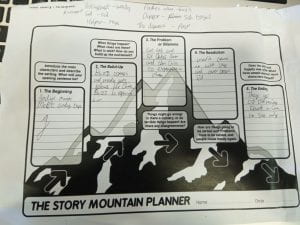There are four different elements of the Narrative. Structure, Character function, conflict and themes. All of these features help us understand the movie in the way the director wants us to see it. All of the elements interact with each other at some point and wouldn’t work with each other. A movie can have amazing conflict, character function and a clear theme but without a structure, it wouldn’t work.
Del Toro use of narrative does coincide with any other fantasy or war genre movie. He instead makes experiments with different aspects of both genre’s (and other movies) to perfect Pan’s Labyrinth’s amazing narrative. The complementary opposites help emphasise the overall message of the movie that innocence has no place in a world of good vs evil. These four elements are explored in the slideshow above.
How narrative study is useful in understanding this film?
- It helps us understand the director’s aim. Messages in films are not always clear when first watching them especially when you don’t have outside context. Studying narrative helps us link parallels of the movie to real life. Be it by culturally, historically or politically.
- It changes the way the film looks. When I was first watching Pan’s Labyrinth I didn’t consider the conflicts in the film (apart from the fairly obvious one of the war) but when studying the narrative I got the bigger picture of what the film was going on about. Watching the movie back now it clears up a lot more about the plot and why things were happening.
- It explains why directors use certain techniques. Del Toro shows Ofelia’s death at the start. When first watching it it’s not clear why he does this as it doesn’t have any context however narrative allows us the understand that Del toro used it as a way to interact with our emotions and to make us feel guilty when she ultimately dies.
- The narrative allows us to understand characters intentions and what they symbolise. For instance Carmen, the plot of her pregnancy first seems like a way for Del Toro to make us feel bad. However, through character function, we can further understand that she is representing the repressed part of Spain who, although don’t like the idea they still live there life’s with it without fighting.
- It allows us to see the development(under development) of characters. In Pan’s Labyrinth, we see many characters develope, mainly the good ones. One of the character who doesn’t is Captain Vidal(the villain). With my further understanding of the narrative, it is clear the symbolisation it represents. It shows that fascism doesn’t have a future and there is no development.

